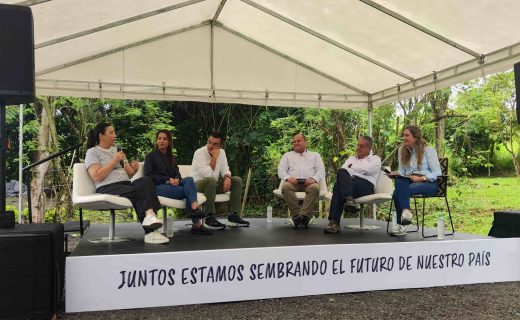

Grupo Argos Foundation • News • News • Sustainability
Grupo Empresarial Argos contributes to the protection of plant and animal species in at least 20 departments across the country
5 September 2024- The organization has a sustainability policy that includes a pillar of responsible operations aligned with the goal of contributing to the protection of native plant and animal species.
- Celsia has identified two orchid species in Calima and directly contributes to the repopulation of native fish species in the Anchicayá River in the Colombian Pacific.
- Odinsa has implemented 40 wildlife crossings in Antioquia within its road concessions to prevent wildlife collisions and to help conserve biodiversity.
- Over the past eight years, Fundación Grupo Argos has led the implementation of more than eight environmental programs aimed at protecting water resources and biodiversity in 20 departments of Colombia.
The companies of Grupo Empresarial Argos are carrying out various programs and initiatives to ensure best practices in their operations, contributing to the protection of native plant and animal species in 20 departments across the country.

“We understand that our responsibility goes beyond generating economic value, and that is why, for 90 years, we have maintained a business vision committed to the protection of our natural resources and the biodiversity that surrounds us.”
Ana María Uribe
Sustainability Manager
Grupo Argos
Flora Species
In 2023, Fundación Grupo Argos, in partnership with Odinsa, through its La Pintada concession, Comfama, and Fundación Julio C. Hernández, inaugurated CIRCA, the research and conservation center for the Cauca River forests. This center aims to contribute, among other ecosystems, to the protection of the tropical dry forest, considered one of the most threatened in the country. In its first year of operation, CIRCA has already produced 114,000 seedlings of native tropical dry forest species, such as Samán (Albizia saman), Ceiba (Ceiba pentandra), Búcaro (Erythrina fusca), Algarrobo (Hymenaea courbaril), Yellow Guayacán (Handroanthus chrysanthus), Pink Guayacán (Tabebuia rosea), and Chumbimbo (Sapindus saponaria). By 2025, the center is projected to produce 500,000 individuals per year of these native species, supporting reforestation processes in the forests of this region of the country.
To protect Colombia’s coastal ecosystems, Grupo Empresarial Argos, through its Sembrando Futuro program led by Fundación Grupo Argos and its Urban Development Business in Atlántico and Bolívar, has planted nearly one million mangrove seedlings over the last six years. This contributes to the conservation of three key mangrove species (Red Mangrove, Rhizophora mangle; Black Mangrove, Avicenia germinans; and Buttonwood Mangrove, Conocarpus erectus), essential for flood prevention and the protection of cities like Barranquilla and Cartagena.
In 2023, Celsia announced the discovery of two new orchid species in the area influenced by the Calima Hydroelectric Plant. These species were registered and internationally recognized as Epidendrum calimaense and Epidendrum celsiae. Furthermore, Grupo Argos’ energy company has identified new flora species in the areas surrounding its operational assets, such as the Alto Anchicayá Hydroelectric Plant, where Pleurothallis celsia was discovered, in collaboration with the Farallones de Cali National Natural Park and its researchers.
Additionally, Celsia is working with Universidad del Pacífico and the National Aquaculture and Fisheries Authority (AUNAP) to develop technology packages for captive breeding of native fish species from the Anchicayá River, such as the Sabalo (Brycon meeki), Sabaleta (Brycon henni), and Barbudo (Rhamdia saijaensis). This project, carried out in collaboration with the Community Councils of the river’s lower basin, aims to repopulate these species and preserve the region’s aquatic biodiversity.
Fauna Species
For the past 10 years, Fundación Grupo Argos has been a key player in the conservation of the Andean bear through the “Conservamos la Vida” alliance. In partnership with other organizations, it works to protect the habitat of the Andean bear, an emblematic species of the country that inhabits the departments of Cauca, Chocó, Risaralda, and Valle del Cauca. These efforts have allowed the recovery of critical areas for the bear’s survival, contributing to the sustainability of high mountain ecosystems in Colombia.
Cementos Argos and Celsia also work on robust environmental management plans to ensure the operation of their plants while preventing and mitigating their impact on local species and territories. Species like the howler monkey, blue-headed parrots, and other wildlife coexist healthily and harmoniously with both companies’ activities.
Odinsa has implemented wildlife crossings to ensure the safety of key species such as tapirs, pumas, and various birds and reptiles, preserving the ecological connectivity in the areas surrounding its projects. Currently, 25 wildlife crossings have been built in the Pacífico 2 concession, and 10 additional crossings (six underground and four aerial) are projected for this year in the municipalities of La Pintada, Támesis, Tarso, Jericó, Fredonia, Venecia, and Santa Bárbara in Antioquia.
Globally Recognized Conservation Practices
With its contributions to the conservation of flora and fauna species, Grupo Empresarial Argos aligns with Goal #4 of the Kunming-Montreal Global Biodiversity Framework, agreed upon in December 2022, which aims to “Stop species extinction, protect genetic diversity, and manage conflicts between humans and wildlife.”
For 12 consecutive years, the Dow Jones Sustainability Index has recognized Grupo Argos and its businesses among the companies with the best environmental practices globally, partly due to their commitment to the responsible operation of their plants and operations.
Mas noticias
-
 Grupo Argos Foundation
Grupo Argos Foundation -
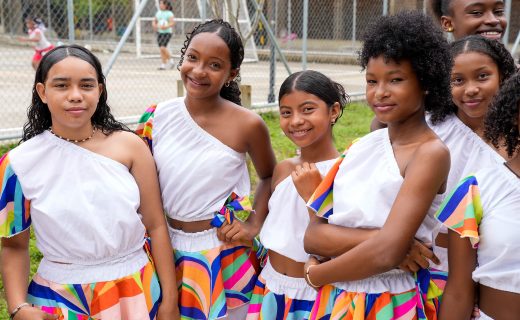 Creamos Valor Social
Creamos Valor SocialThe project to make Nueva Colonia’s sewer system in Turbo a reality has been approved: more than 12,000 people will see an improvement in their quality of life
5 March 2025 Read more -
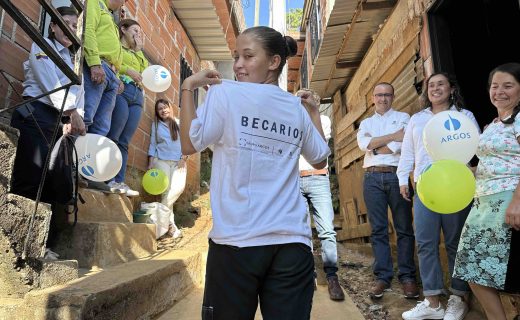 News
NewsGrupo Argos and its companies, Cementos Argos and Celsia, reaffirm their leadership among the most sustainable companies in Colombia, according to Merco
26 February 2025 Read more -
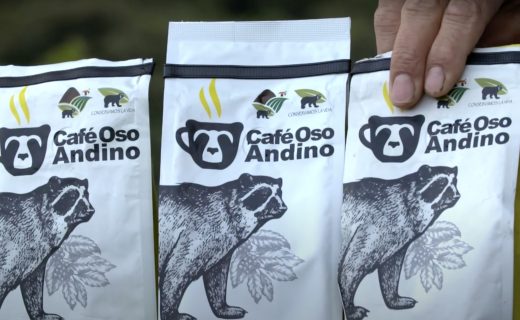 Grupo Argos Foundation
Grupo Argos FoundationEight farming families in Valle del Cauca received the international quality certification recognizing them as protectors of the Andean Bear in Colombia
21 February 2025 Read more -
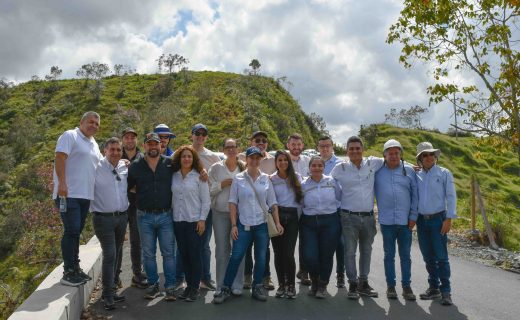 Creamos Valor Social
Creamos Valor SocialMore than COP 350 billion invested by Grupo Empresarial Argos and its allies to transform lives in vulnerable municipalities
20 February 2025 Read more
